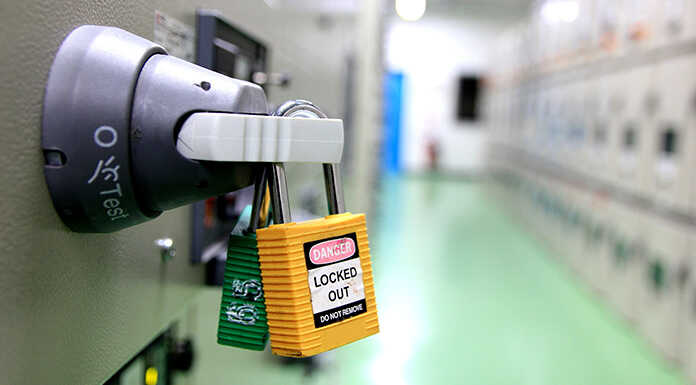Out of all the environmental, health, and safety standards and regulations, lockout tagout is among the most important to me. That may sound geeky, but behind each OSHA regulation or internal Standard Operating Procedure, many severe injuries or fatalities have driven legislation over time.
Best practices have become formal recommendations and later written into law depending on analytics and the regulatory climate. The standards and protocols are designed to protect workers during service, maintenance, set-up, adjustment, and any other time they need to be in the machine.
Most lockout tagout-related events that I have responded to come from three categories:
- Being pulled into point of operation while servicing
- Contacting electricity where it was not expected while servicing
- Contacting moving parts during set-up, adjustment, or maintenance activities that necessitate the machine to be running
Interestingly, the latter may not be a lockout Tagout-covered operation, but safeguarding practices need to happen where alternatives are allowed.
Workers’ compensation claims have arisen from injuries such as loss of legs, arms, feet, fingers, degloving (an extensive section of skin is completely torn off the underlying tissue), severe lacerations, crushing, and electrocution. Other claims include fatalities such as being cooked in a pre-heater to a kiln, entangled in PTO (Power Take Off) shaft, contact with a 480 DC volt power supply, and crushed by a truck bed. These events could have been prevented by machine-specific procedures covering de-energizing, blocking, locking out, and sometimes developing a safe running repair procedure.
Lockout Tagout Protocols
Lockout Tagout OSHA regulations, such as 1910.147 (The Control of Hazardous Energy), are straightforward but are often misunderstood and misapplied. Lockout tagout protocols include:
- Letting people know when the machine is going to be shut down
- Identifying ALL machine energy sources, turning them off, blocking or otherwise securing them
- De-energizing where required, such as bleeding pressure, removing stored electricity, securing springs or parts that may fall after shut-off
- Applying a lock or device
- Testing the lockout via the actuation of a switch or method that normally starts the machine
- Completing the work
- Collecting ALL tools and notification that the machine is going to re-start
- Conducting planned and unplanned inspections to ensure procedures are still being followed
Set-up Adjust and Jam Clearing
Various types of machines may not require or be conditionally exempt from lockout tagout. Printing presses and similar machines need constant adjustment while running. It is also not infrequent or rare that equipment may need to run unguarded and without lockout to adjust for a production run or quality assurance prior to putting guards back. But how do we protect employees during this activity? Review existing programs or develop programs, procedures, and practices that can help to prevent injuries and fatalities.
Running repair, jam clearing, and lack of machine-specific procedures are blind spots I encounter frequently. Sometimes employees may rely on interlocks as a lockout which is prohibited. Why is this? Because interlocks fail and they may not protect employees from being injured. I have personally seen an instance where the machine power was shut off, and the system was still running since it took a long time to finally come to rest. The interlock allowed access to the point of operation where a partial hand amputation occurred. This is one of the key reasons to review and audit existing programs, procedures, and practices in the field.
ICW Group’s Safety OnDemand learning management system contains a full suite of safety and training resources, webinars, and a comprehensive learning management system to assist you with your lockout tagout program. In addition, ICW Group offers an Energy Control Program Wizard, a Lockout Tagout Program Audit, and Lockout Tagout Employer’s Guide to assist you with your Federal OSHA compliance efforts. Safety OnDemand is free with an ICW Group workers’ compensation policy, and easy registration is required to access these tools.
If you have any questions or need assistance with developing your program, please contact ICW Group’s Risk Management Services, and we will be more than happy to assist you.

















